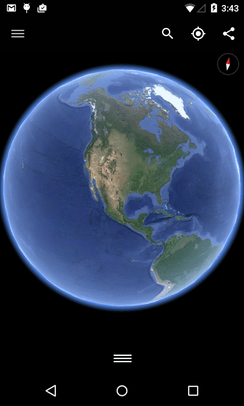

- #Difference between google earth and google earth pro how to
- #Difference between google earth and google earth pro pro
- #Difference between google earth and google earth pro software
- #Difference between google earth and google earth pro Pc
- #Difference between google earth and google earth pro license
The GIS data has now been converted to KML and the data appears in Google Earth. You will be prompted to save the style template for future use. Under the Height tab, keep Clamp features to ground selected to visualize the data draped over the terrain in Google Earth.

Under the Color tab, select Use single color and click on the color swatch to choose a color. In the Style Template Settings dialog box, you can create a style template including colors, labels, and icons. When prompted to create a Style Template, click Yes. You can choose to import a sample of the data, restrict the imported data to your current view, or import all.

NOTE: A warning message may appear if your file contains more than 2500 features. Choose a shapefile (AutoCAD Shape Source File) from the file type menu and click Open. Select Import from the File menu.Ĭhange the list of viewable files to All Files (*.*). This tutorial utilizes Google Earth Pro, Google Maps online, and ArcGIS 10.4.1.
#Difference between google earth and google earth pro how to
In this tutorial we will cover how to load shapefiles into Google Earth, how to draw features in both Google Earth and Google Maps, and how to export your features as a KML file for importing into ArcGIS. This tutorial will cover how to visualize GIS data in Google Earth and Google Maps and how to extract data from Google Earth and Google Maps
#Difference between google earth and google earth pro license
You can download it here and sign in using your email address as your username and the license code, GEPFREE.Importing and Exporting GIS Data from Google Earth and Google Maps
#Difference between google earth and google earth pro pro
*Google Earth Pro comes with Movie-Maker, which can export presentations to Windows Media and QuickTime HD movies, up to 1,920×1,080-pixel resolution. In fact, given the technical issues mentioned above, you will want to save your work in Earth pretty frequently. You can save your presentations as KMZ files (an archived XML file) to be used later or uploaded to Maps (but, as mentioned earlier, overlays will not appear). It even contains several years’ worth of satellite maps and aerial photography: But Earth does contain a wealth of data you can add to your presentations, including 3D models of buildings, and you can toggle off all of these layers if you do not wish to use them, which is something Maps does not permit: This feature is also important, since unlike Maps, you cannot change the base map in Earth. Here is a sample tour that was created by Dickinson Classical Commentaries:Īnother useful feature that is now unique to Earth is the ability to overlay maps and images onto the base map (Maps recently disabled this): You can even add an audio commentary by clicking the “Record a Tour” icon *: You can control the positioning and zoom levels for each location by positioning it the way you want and setting that view as a “snapshot:” To navigate through a series of locations in Maps, you can only click through them in the sidebar (or actually click and drag the map around):īut when locations are added to Earth, they automatically generate an automated tour which can be launched by clicking the play icon: As a presentation tool, it is far more dynamic than Maps.
#Difference between google earth and google earth pro Pc
For example, it is not possible to embed a video into a pushpin using the Mac version of the software, even though this can be done with the PC version.ĭespite all of this, there are still some very compelling reasons to use Google Earth. There are also strange glitches that have appeared over time and have never been patched.
#Difference between google earth and google earth pro software
The software is very resource intensive and tends to crash occasionally. Whereas, Google Earth has not been updated since 2013, a very long time in the world of software, and unfortunately, it shows. Most importantly, Maps is very stable and is still being developed by Google. In Maps, you can choose from a variety of base maps: You can also draw lines and polygons, just like you can with Earth: Google Maps will let you add pushpins that can contain text, images, and video. But which one is the best fit for your particular needs? With Google adding so much of Earth’s functionality to Maps, we thought now would be a good time to compare the two. If you would like to create some maps to present to your class or add to a project, Google Maps and Google Earth are two easy-to-use and feature-rich applications that are worth checking out.


 0 kommentar(er)
0 kommentar(er)
